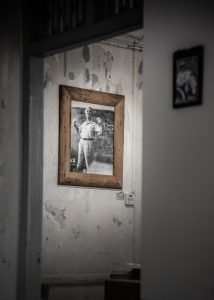Art Deco design is chic and timeless. The style is still popular, even though it was most popular in the 1920s and 1930s.
Art Deco style was prevalent during the Jazz Age, Art Deco period, or Modern Style period. It coincided with the advent of machine-made furniture and home decor. One of the best things about art deco furniture and decor is that it can be updated for contemporary living spaces, making it a great choice for home decorating.
Art Deco design is characterized by geometric shapes, stylized plant motifs, zig-zag patterns and calligraphy styles. The style has evolved over the years, but many of its elements still remain popular in contemporary interior design today.
The art deco movement in architecture began in Paris around 1925 and quickly spread to other countries throughout Europe and North America. It eventually reached its peak in the late 1920s and early 1930s before declining with the onset of World War II in 1939.
The Art Deco style is a movement that was founded in the early 1920s. The style is based on “the mode of thought and expression in the machine age”. Art Deco artists aimed to produce objects with perfect lines, simple forms, and often geometrical shapes that were often arranged in repetitive patterns.
Art Deco began as a reaction to the art styles prevalent at the time, including Cubism and Fauvism. It was an attempt to get away from this modern art style and return to something more classical. The movement began in France, but it spread throughout Europe and America.
Art Deco is a visual art style that began in France in the 1920s. It was influenced by Cubist and Futurist works and flourished internationally during the 1930s, the time known as the Roaring 20s. Style, which is characterized by geometric shapes and refined, colorful patterns, can be found in architecture, interior design and fashion. Art Deco is a visual art style that began in France in the 1920s. It was influenced by Cubist and Futurist works and flourished internationally during the 1930s, the time known as the Roaring 20s. Style, which is characterized by geometric shapes and refined, colorful patterns, can be found in architecture, interior design and fashion.
Art Deco design is highly decorative. That’s why it’s often referred to as “Jazz Moderne.” The boldness of this style makes it perfect for large spaces like hotel lobbies or restaurants; Las Vegas has plenty of Art Deco buildings to prove it!
Art Deco walls were painted with bold colors that were mixed to create new ones; this type of color scheme is called “fancy color.” This movement was most popular from the 1940s until about 1960 when brighter colors came into vogue. Still, it’s not uncommon to find
In the year 1996, a famous Glasgow based designer called Charles Rennie Mackintosh designed the first art deco piece of furniture. This was an interesting time to be designing as the art deco style had become very popular and designers were making lots of new designs.
The popularity of art deco is due to several factors. One of these is that it’s very much a style of its time, it was at its most popular in the 1920s and early 30s but you can still see it today in some places like Las Vegas. It was also a style which was very forward thinking, the designs were often angular, geometric and abstract with clean lines and simple shapes. During this period there was a growing interest in design and this led to many people experimenting with new styles and types.
Art deco furniture is popular throughout the world now, especially in America where you can still buy reproduction pieces which look just like those produced during the twenties and thirties. If you want to buy yourself a piece of art deco furniture then you can either try to find an original or alternatively buy a reproduction piece from one of the many places online who sell these kinds of things.
Art Deco was an international style in the 1920s and 1930s. Early examples appeared in Germany, France, and Britain. The most notable example of this period is the German architect Alfred Grenander’s 1926 redesign of the façade of the Mossehaus, which is considered one of the first examples of the new style. The influence of Art Deco began to reach Japan during the late Taisho period (1912–1926) and spread to China in the 1930s.
Art Deco became popular in Latin America during that time as well. Buildings with Art Deco designs can be found in all large cities, particularly Buenos Aires, Argentina; Rio de Janeiro, Brazil; Caracas, Venezuela; Havana, Cuba; Mexico City, Mexico; and Montevideo, Uruguay.
Art Deco reached its peak in Europe at the end of the 1930s as a design concept for fashion and other decorative arts including interior design, jewellery, furniture and theatre set design. In addition it influenced architectural style – especially in commercial buildings of a modernist aesthetic – for example in London’s Piccadilly Circus tube station designed by Charles Holden, Stockholm Stadshus designed by Ivar Tengbom from 1928 and Manchester Town Hall by Owen Williams
The art deco style emerged in France in the early 1920’s with the Exposition Internationale des Arts Décoratifs et Industriels Modernes (International Exposition of Modern Industrial and Decorative Arts) held in Paris. It was a show that was designed to showcase the new styles of the time and to educate people about new ideas and techniques.
The art deco style had many different features that made it unique such as geometric designs, sharp lines, and lavish use of color. However, art deco designers also borrowed heavily from historical styles such as Egyptian and Asian designs.
Art deco design is very identifiable because of its bright colors, geometric designs, and simple shapes. The style itself included architecture, graphic design, interior design, fashion, jewelry, furniture design, product design and even advertising design.
Art deco was popular throughout the world but American designers were most concerned with creating a distinct national identity for the United States so they tended to combine art deco with American symbols.
Art deco was popular from around 1925 until 1939 when World War II broke out. After World War II ended in 1945 people began to favor simpler styles like mid-century modernism. However, there are still many examples of art deco throughout the
Art Deco is an artistic movement that I have always been fascinated with and in the piece, I go over its history, the artists and architects who were influential during the time of this movement, and how it spread from France to other parts of the world. This was a style that was very modern and sleek. The use of geometric shapes and curves were used as well as bold colors that were vibrant at times and dull at others.
What stands out to me most about Art Deco is the use of geometric shapes, especially triangles; a symbol of strength. These triangles can be seen in many different forms such as jewelry, furniture, architecture, interior design, and clothing. There are also many different variations of triangles used throughout all these forms including three-pointed, four-pointed or five-pointed stars. The most common triangle seen in Art Deco is the three-pointed star. These types of triangles seem to be so important because they resemble the shape of pyramids; a symbol of ancient Egypt. Pyramids were also used throughout Art Deco because they represented power and strength as well as grandeur. Some examples of this are: The Empire State Building in New York which is one of the most famous skyscrapers


